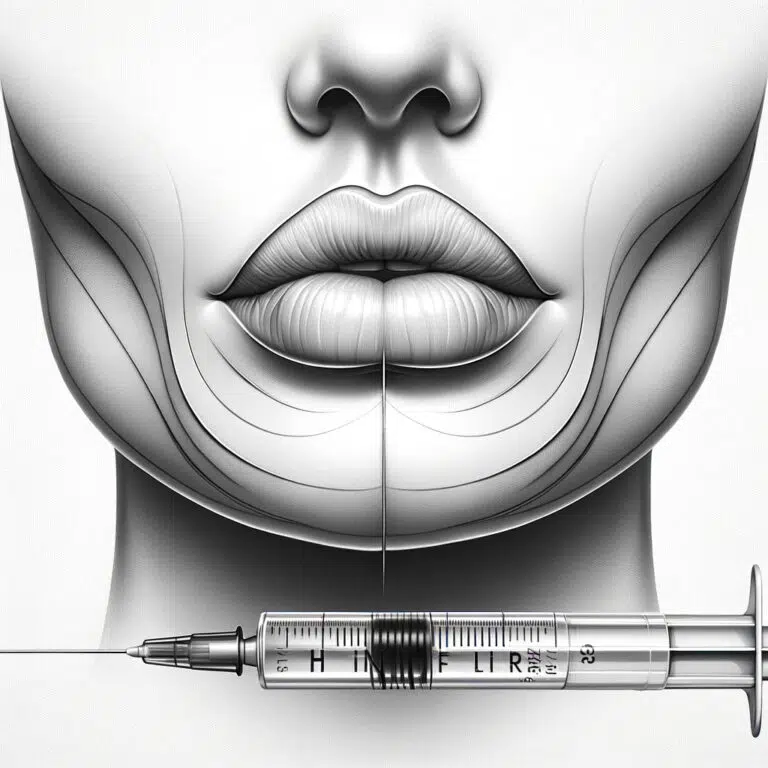
Guide to Acne Scar Types and Classifications
Acne is a common skin condition that affects millions of people worldwide. While the physical and emotional toll of acne can be significant, acne scars can be an even more stubborn reminder of past breakouts. Understanding the different types of acne scars and the best treatment options available can help you achieve smoother skin. It is important to understand the difference between them to choose the best acne scars treatment
.
“For successful treatment, it is important to analyze the skin and know the acne scars to choose the most effective treatment”
– Dr. Kamal Alhallak, Albany Cosmetic and Laser Centre
Types of Acne Scars


These are two info graphs that shows the four types of Hypotrophic scars
Client Reviews and Testimonials
Video that Explains the Difference Between Lesions
Hypotrophic scars
Icepicks
Ice pick scars are small, deep holes in the skin caused by tissue loss. The most common type of scarring can occur on the face, chest, back, or other body areas. Ice-pick scars are usually the result of acne or another type of injury. While they can be difficult to treat, there are several options available. TCA cross-chemical peel is the most effective treatment for ice-pick scars. In addition, several home remedies can help to reduce the appearance of scars. These include aloe vera, vitamin E, and cocoa butter. With so many options available, there is no reason to live with ice-pick scars.
Bixcars
This type scar is one of atrophic scar that commonly occurs on the face. Depressed areas of skin with sharp vertical edges characterize it. Various factors, including acne, chickenpox, and trauma, can cause boxcar scars. Treatment options for boxcar scars include microdermabrasion, laser resurfacing, punch excision, and filler injections. While boxcar scars can be difficult to treat, many effective options are available to improve the appearance of the skin.
Rolling Scars
Rolling scars are a type of scarring that can occur after an injury. They are usually caused by the skin being stretched or torn, which damages the underlying tissue. Rolling scars typically appear as raised, reddish lines on the skin. However, over time, they may become less visible. If you have rolling scars, you can improve their appearance with laser therapy, microdermabrasion, and fillers. In some cases, surgery may also be an option. Talk to your doctor about the best treatment option for you.
Hypertrophic scars
Hypertrophic scars are the most difficult types of Acne Scars. They are a type of scar that can occur after injury or surgery. They are raised and thickened and often appear red or purple. Hypertrophic scars differ from keloids, which are raised scars extending beyond the original injury’s boundaries.
Although hypertrophic scars are not usually harmful, they can be unsightly and cause psychological distress. Treatment options for hypertrophic scars include intralesional corticosteroids, silicone gel sheeting, pressure dressings, and laser therapy. In some cases, surgery may be necessary to remove the scar tissue. With proper treatment, hypertrophic scars can be minimized and even prevented.
Keloid scars
Keloid scars are raised scars that can occur after any skin injury, including surgery, burns, and Piercing. An overgrowth of collagen causes keloids at the site of the injury. They can vary in size and shape and can be itchy or painful.
In some cases, keloids can interfere with joint movement. While keloids are more common in people with darker skin tones, they can occur in anyone. There is no guaranteed way to prevent keloids, but treatment options are available if they do occur. Surgery is typically used to remove keloids, but injections and topical treatments can also be effective. The decision to treat a keloid is usually based on its size, location, and symptoms.
In most cases, keloids are not a medical concern and do not require treatment. However, some people prefer to treat them for cosmetic reasons. Treatment options will be discussed with you if you decide to reduce the appearance of your keloid scar.
Macular Scars
Macular acne scarring is characterized by areas of increased and decreased pigmentation in the affected area. This type of scarring has a flat texture, and although there are no indentations or raised scars present, many patients still consider this to be a form of scarring. Rolling scars, on the other hand, appear as undulations or waves in the skin, which give it an uneven texture. These types of scars can sometimes appear deeper than macular acne scars and may require more intensive treatment, such as laser surgeries or chemical peels, to reduce their appearance.
In some cases, dermabrasion may also be used to help smooth out the surface of the skin and reduce the visibility of the rolling scar. The best way to treat macular acne scars is through the use of topical treatments such as retinoids or alpha hydroxy acids, which can help even out skin tone, increase cell turnover, and fade discoloration over time. Additionally, light therapy or lifestyle changes such as avoiding smoking and protecting skin from sun damage may be recommended to help prevent further scarring.


